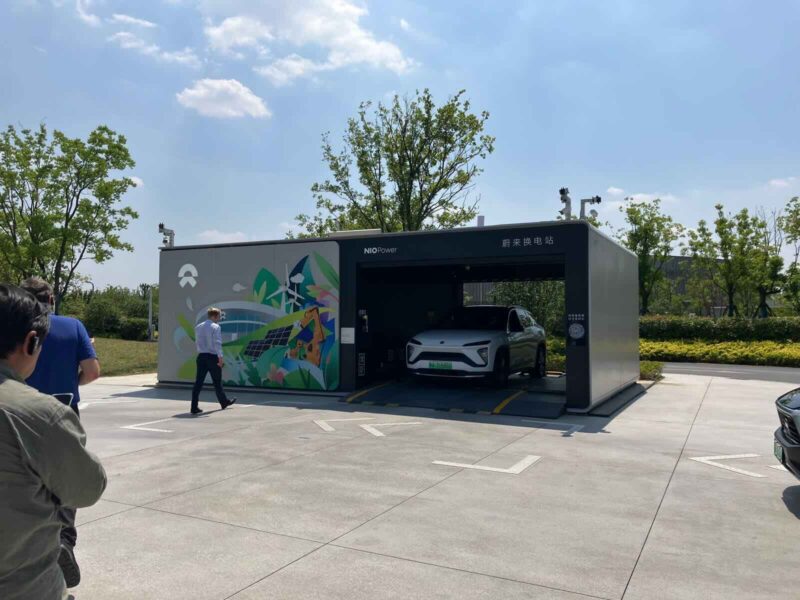Two of China’s largest energy companies have announced plans to build a nationwide battery swap network, with 500 stations to be built this year, on the way to building a total of 10,000.
Announced on Monday in Beijing, China Petroleum & Chemical Corporation, better known as Sinopec, one of China’s largest integrated energy and chemical companies, signed a framework agreement with CATL (Contemporary Amperex Technology Co., Limited), a leading manufacturer of lithium-ion batteries.
Together, the two companies aim to “leverage their respective strengths to accelerate the development of battery swap ecosystems” and standardise operations.
The two companies aim to build “no fewer” than 500 battery swap stations in 2025 alone, with a long-term goal of building out 10,000 stations to create a seamless “swap-as-fast-as-refuelling” experience for electric vehicle (EV) owners across China.
Boasting an extensive network of 30,000 integrated energy stations across China, Sinopec also operates 28,000 Easy Joy convenience stores and over 10,000 ultra-fast charging stations.
Conversely, CATL already boasts partnerships with leading automakers including Changan, GAC Aion, BAIC, SAIC, Hongqi, Nio, and major truck producers like Sinotruk and Foton, with the goal of rolling out batter-swappable passenger and commercial vehicles.
Interestingly, the news also comes only a few weeks after CATL and Nio announced their own strategic partnership to deliver the world’s largest battery swapping network.
Just as with its latest agreement with Sinopec, the CATL and Nio partnership also intended to focus on standardisation of industry technologies.
Sinopec and CATL’s partnership builds on an existing relationship in energy stations, storage, and advanced materials, and will expand to build smart energy microgrids featuring solar power, energy storage, charging, swapping, and battery inspection.
Joshua S. Hill is a Melbourne-based journalist who has been writing about climate change, clean technology, and electric vehicles for over 15 years. He has been reporting on electric vehicles and clean technologies for Renew Economy and The Driven since 2012. His preferred mode of transport is his feet.

